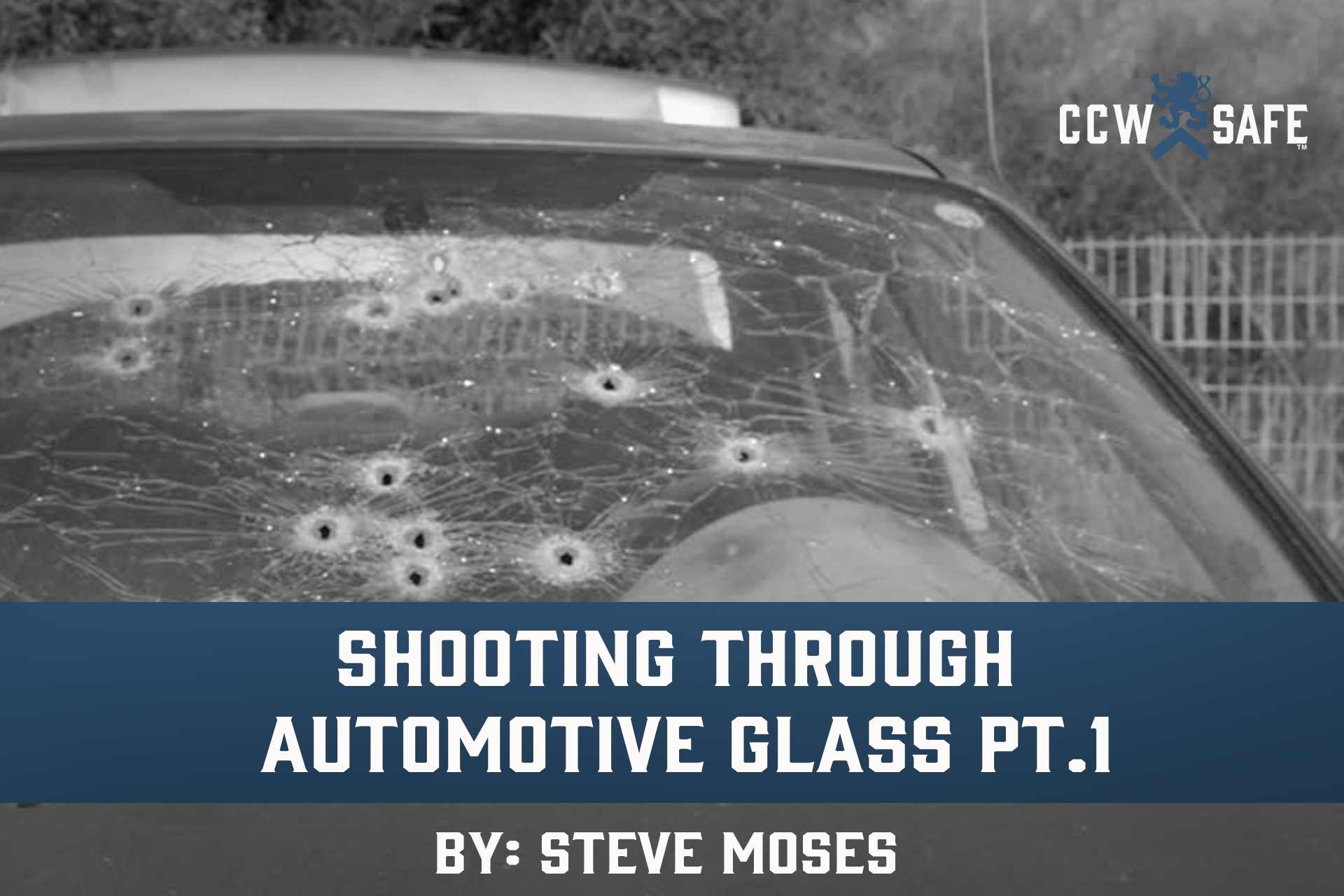
Posted on May 25, 2020
SHOOTING THROUGH AUTOMOTIVE GLASS PT. 1
SHOOTING THROUGH AUTOMOTIVE GLASS PT. 1
It is a fact of life that many concealed carriers spend a lot of time in their vehicles. Naturally, much of that driving time involves sharing the road with other drivers. It should come as no surprise to concealed carriers then that some of those vehicles might contain persons who are willing to use violence if “provoked”.
One well-known example would be a contentious encounter between two persons stemming from a “Road Rage” incident. Merriam-Webster defines Road Rage as “a motorist’s uncontrolled anger that is usually provoked by another motorist’s irritating act and is expressed in aggressive or violent behavior.” If a driver (or passenger) already spends much of his or her awake time in a perpetual state of frustration and/or anger, it should probably come as no surprise that a full-blown emotional blowup can occur when he or she encounters anything considered disrespectful, no matter how minor the cause. Such a driver may interpret being cut off, honked at aggressively, or forced to suddenly apply the brakes as a sign of extreme disrespect that was personally directed towards him or her.
Motorists often will pursue the offending vehicle and sometimes attempt to cut it off or force it off the road. There are numerous reports of the occupants in one vehicle shooting at the occupants of another vehicle while both vehicles are in motion. One of my concerns has always been that an angry motorist might follow me until such time I stop and park my vehicle and then confront me on foot.
My preferred response if confronted in the manner described above can largely be summed up as follows:
If my vehicle is still mobile, lock the doors and drive away. While driving away I will do my best to keep track of the location of the other party, including frequent glances at my rearview, driver, and passenger-side mirrors. If followed by the other vehicle, I will drive to the nearest police station, fire station, or hospital emergency room entrance if possible. One thing I will not do is drive straight home out of concern that the other motorist may follow me and now knows where I live. I will call immediately 911 and report what just occurred.
If my vehicle is immobile (trapped in stopped traffic, pinned in place in such a manner that I can’t drive off, or wrecked out, etc.), I will make sure the doors are locked, windows up, transmission in park (or neutral if a manual transmission), and the parking brake engaged. I will unlatch the seat belt buckle in order to not get tangled up in or pinned in place.
I am an advocate of pinning the outside arm to the chest while unbuckling the seat belt so that the shoulder harness clears the same arm when retracting. Failure to do so can cause the shoulder harness portion to snag that arm when exiting the vehicle. I would suggest calling 911 while keeping the other motorist in sight as much as possible and watching for visual clues that would suggest that an attack might be imminent.
My primary concerns at this time are the other motorist’s hands and beltline (where weapons are often carried). As long as I am in my car and can keep an eye on both and do not see a weapon I am most likely not in dire jeopardy. However, the circumstances can change in the blink of an eye.
If said motorist produces a contact weapon (knife, crowbar, hammer, sizeable rock, etc.) then the chances that the situation could become dangerous just increased significantly. This is not a good time to be thinking about what I need to do in order to gain access to my concealed handgun. Instead, I want to be able to focus mental resources on choosing and implementing solutions that are most likely to be successful in effectively dealing with the challenges I may face at any time.
Options might include a continuous attempt to de-escalate the situation while keeping both hands on the steering wheel, or achieving a firing grip on the handgun while it remains concealed under my cover garment, or exposing the holstered handgun without drawing it, or drawing the handgun and squaring my hips in the direction of the threat while keeping the muzzle pointed in a safe position. I would try to not use lethal force against another bearing a contact weapon from my vehicle until such time that I am absolutely convinced that I am in imminent danger of being seriously injured or killed.
Part Two of this article will discuss several options that concealed carriers might have in the event that they are confronted by an angered motorist armed with a firearm while the concealed carrier is still in his or her vehicle but unable to drive away.
 |
Steve MosesSteve is a long-time defensive weapons instructor based out of Texas who has trained hundreds of men and women of all ages for more than two decades on how to better prepare to defend themselves and their loved ones. Steve has completed over 80 private-sector and law enforcement-only defensive weapons and tactics classes, and has trained civilian and law-enforcement officers in six states. Moses is a reserve deputy, former member of a multi-precinct Special Response Team, competitive shooter, and martial artist. Steve has written numerous articles for SWAT Magazine and other publications. Steve is a licensed Texas Level 4 Personal Security Officer and Instructor who was Shift Lead on a mega-church security detail for seven years, and has provided close protection for several former foreign Heads of State. He is currently an instructor at Relson Gracie Jiu Jitsu/Krav Maga in Tyler, Texas and Director of Training for Palisade Training Group (www.ptgtrainingllc.com). |